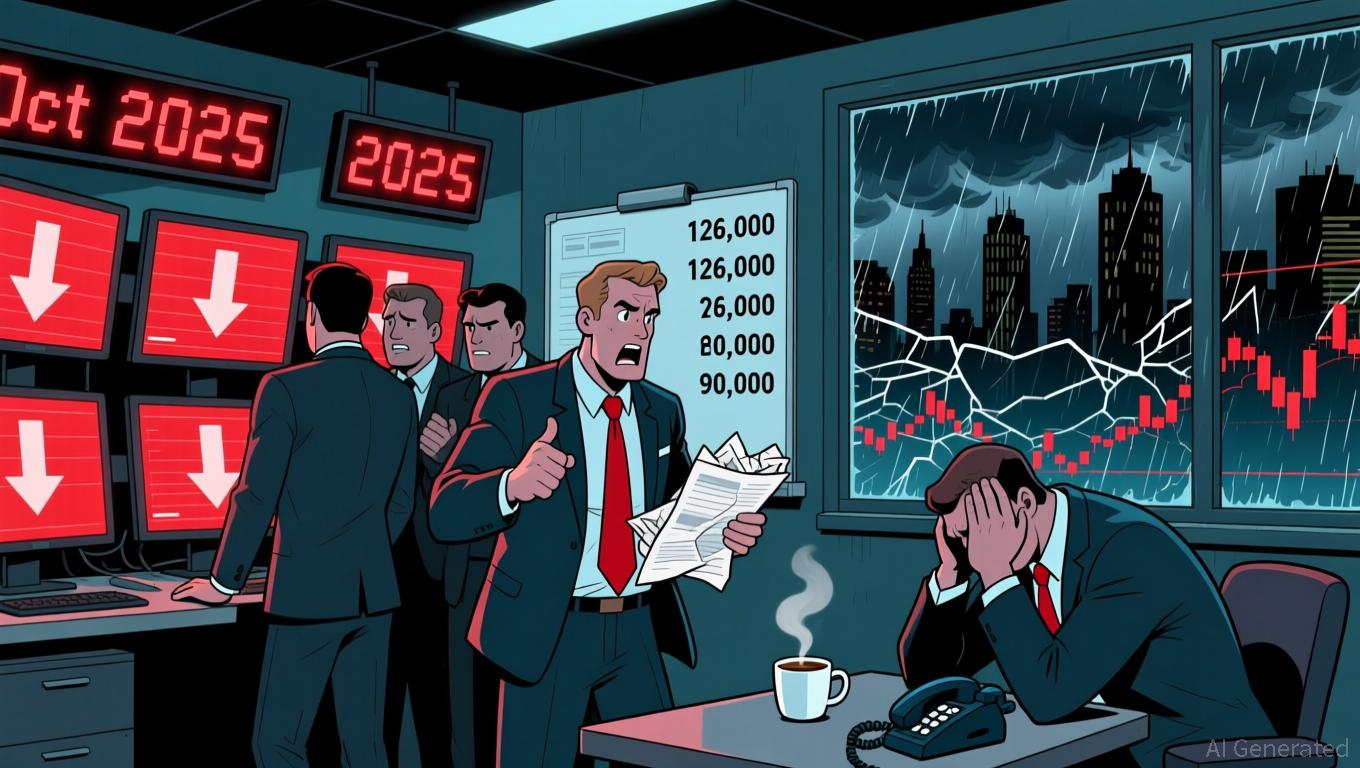Bitcoin Whale Wallets Surge to Four-Month High as Retail Investors Exit
Large Bitcoin holders have increased their positions to a four-month high of 1,384 wallets holding at least 1,000 BTC. At the same time, retail investors with 1 BTC or less dropped to an annual low of 977,420. This divergence highlights a recurring pattern: experienced whales accumulate during downturns, while smaller holders exit in fear. Whale
Large Bitcoin holders have increased their positions to a four-month high of 1,384 wallets holding at least 1,000 BTC. At the same time, retail investors with 1 BTC or less dropped to an annual low of 977,420.
This divergence highlights a recurring pattern: experienced whales accumulate during downturns, while smaller holders exit in fear.
Whale Accumulation Accelerates During Market Correction
According to Glassnode data, wallets holding at least 1,000 BTC rose to 1,384 this week from 1,354 three weeks ago—a 2.2% increase. This count is the highest for large holder wallets in four months, suggesting renewed confidence among institutional and high-net-worth investors despite turbulence in the broader market.
Meanwhile, wallets containing 1 BTC or less declined to 977,420—down from 980,577 in late October. This marks the lowest level of smallholder participation in a year. It follows the typical pattern of less experienced investors capitulating during price corrections.
Bitcoin has endured its third-largest drawdown of the current cycle, dropping over 25% from its all-time high six weeks ago. Bitcoin opened on Wednesday near $92,600, and was traded in a choppy range between $92,200 and $92,800 throughout the morning session in Asia, displaying typical volatility as traders navigated between support and resistance.
Historical trends suggest that whale accumulation amid retail selling often precedes stabilization. Currently, just 7.6% of the short-term holder supply is in profit—a level commonly seen at cycle lows. In addition, the STH Realized Profit-Loss Ratio has dropped below 0.20, another metric that often aligns with market bottoms.
Capital Rotating within Crypto Markets
The Crypto Fear & Greed Index stays at 11 out of 100 for two days, reflecting deep fear across the market. Social media sentiment has become strongly negative. Traders share memes about returning to traditional jobs and express doubts about a quick recovery.
According to Coinglass’s Bitcoin Long/Short Ratio Chart, the overall trend shows persistent bearish pressure, with traders repeatedly positioning for price declines. However, sentiment occasionally swung back toward optimism before returning to predominantly negative expectations.
Some market observers see this extreme pessimism as a contrarian signal. Sentiment is compressed, leverage is lower in derivatives markets, and whale accumulation persists. According to Bitfinex’s on-chain analysis, selling exhaustion is apparent, and capital is rotating within crypto markets rather than leaving altogether.
Open Interest for BTC/USDT sits around 100K, showing stronger trader participation even as prices fall. This scenario—rising Open Interest and falling prices—usually signals bearish sentiment, possibly driven by aggressive shorting. However, the pace of sales and realized losses has begun to stabilize, suggesting a possible transition to consolidation.
Bob Diamond, the former Barclays CEO and now head of Atlas Merchant Capital, views the recent turmoil in global asset markets as a healthy correction—not the start of a full-blown bear market. Diamond points out that investors are still working out how to price risk assets amid rapid technological shifts.
As Bitcoin searches for a bottom in late 2025, the split between whale accumulation and retail selling forms a classic market structure. The coming weeks should reveal whether institutional confidence is enough to stabilize the market or if fear continues to rule trading.
Disclaimer: The content of this article solely reflects the author's opinion and does not represent the platform in any capacity. This article is not intended to serve as a reference for making investment decisions.
You may also like
JPMorgan’s Competitive Advantage: Healthcare and Financial Sectors Flourish as Markets Evolve
- JPMorgan views current U.S. equity pullback as a buying opportunity, signaling potential stabilization after valuation-driven corrections. - Raised Eli Lilly's price target to $1,150 citing regulatory tailwinds for obesity drugs despite sector challenges like Merck's Cidara acquisition. - Dominated leveraged loan markets with $20B EA financing, leveraging $50B regulatory exposure limits to outpace rivals in high-risk deals. - Faces legal scrutiny over Epstein ties and $73M Javice liability, contrasting w

Crypto Takes a Hit, ARK Invests: Major Wagers on Key Industry Leaders
- ARK Invest heavily buys crypto-linked stocks like Coinbase , Circle , and Bullish amid market declines, signaling sector resilience bets. - Purchases occur as Bitcoin drops below $90,000 and regulatory uncertainties persist, with ARK's "buy the dip" strategy targeting foundational crypto players. - Analysts highlight Circle's stablecoin leadership and Bullish's growth potential, despite post-earnings stock declines and broader crypto volatility. - Institutional moves like Canary Capital's XRP ETF and Kra

Bitcoin News Update: Institutions Increase Bitcoin Holdings Threefold During Market Fluctuations, Strengthening Abu Dhabi’s Aspirations as a Crypto Hub
- A 10-year Bitcoin model by Sminston With shows 300% returns even with poor timing, highlighting its long-term resilience despite 2025 volatility. - Global liquidity ($113 trillion) and undervalued BTC (-1.52σ below fair value) suggest favorable conditions for Bitcoin's $170,000 projected fair price. - Institutional confidence grows as Abu Dhabi's Mubadala triples Bitcoin holdings and invests $2B in Binance, reinforcing its crypto hub ambitions. - New projects like Bitcoin Munari (BTCM) and regulatory shi
Bitcoin Updates: Institutions Remain Wary Amid Regulatory Turbulence—Will Bitcoin Reach $80K?
- Bitcoin fell below $90,000 in late 2025 amid regulatory scrutiny, macroeconomic uncertainty, and institutional outflows, losing 26% from its October peak. - Record $523M ETF outflows and $19B leveraged liquidations highlight market fragility, while Harvard's $443M IBIT allocation signals cautious institutional interest. - Fed ethics scandals and delayed rate cuts (now 46% chance in December) exacerbate uncertainty, alongside Japan/Brazil's regulatory headwinds raising compliance costs. - Analysts debate

